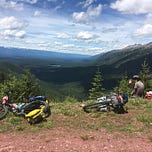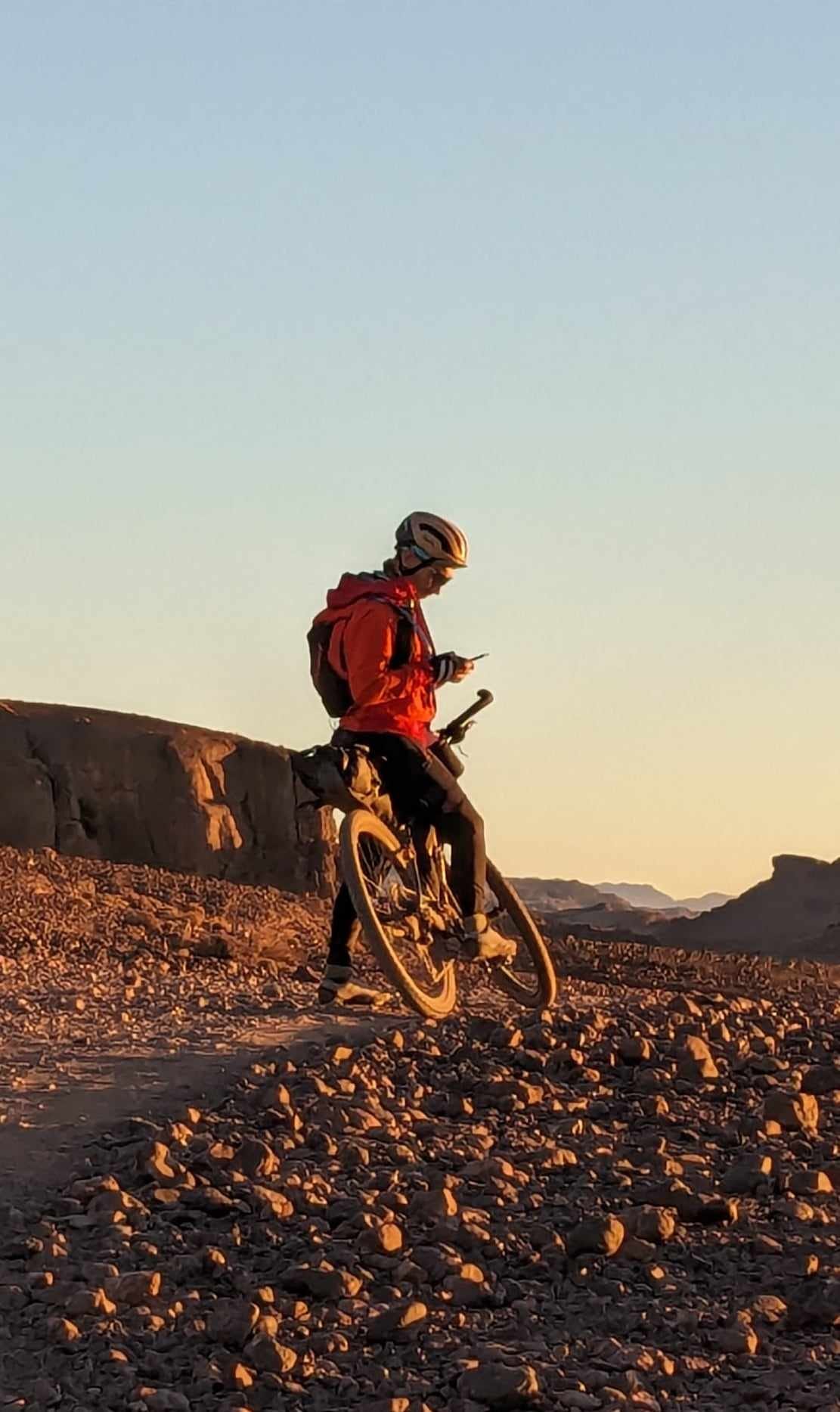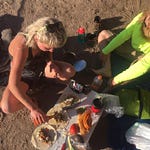How to have a successful Bikepacking Expedition- Part 2
What ‘they’ don’t tell you in the guidebooks
Authors note: These words are based on my bikepacking and backpacking experiences. I write these like I am sitting across from you, having a cup of coffee, perhaps sharing a meal. My recommendations are my own, you may or may not agree with them and that is ok. This is the way I do things, and we are not all the same, but we are cut from the same cloth of the universe. I encourage you to share your ways as well. I edit minimally for more authenticity.
Bike seats:
If it ain’t broke, why fix it?
Bicycling is an art. And just like with any art, it takes a lot of trial and error to become proficient at it. The bike industry does not help keep it simple with more and more products. It tends to make it more confusing for you, the consumer. Finding the right bike seat is important but really what’s more important is finding how to sit on the seat correctly. In my last post I talked about using your sit bones.
I see so many people in my travels who sit in awkward positions, and they tend to stay in the saddle too long and make their bum uncomfortable, and then they stop riding. In my humble opinion, the best bicycle seats would be the one similar to the Brooke saddles or just the smaller saddles with a modest amount of padding. I encourage people not to wear chamois and to learn to ride with just a thin layer of wool or synthetic material, but wool is the best.
There’s an art to sitting on a bicycle seat and I’ll write about that in another post but for right now find the smaller bicycle seats not the bigger ones as the more area that you’re subjecting to sitting on the seat means less blood flow. And face it, bicycling is not always good for the body when it comes to the bicycle seat and road vibration there’s actually quite a bit of trauma that goes on, but finding a bicycle seat that works doesn’t need to be complicated in most cases it’s not the seat that’s the issue, it’s usually the rider that’s the issue. I myself can take any normal small saddle and make it work and maybe that’s a good attitude to have. If you only had one saddle and you had no choice to buy another one, how would you make it work? What adjustments would you make on your body? The saddle I use is the WTB Volt, I find it fits well and there are many other similar variations or copies on the market I can use if mine fails for some reason (I usually wear it out). I think we as humans need to get tougher, but with that, show compassion to your body and the bicycle. Too many people fight the bike-why?
My advice: Relax, breathe, press your sit-bones in the saddle, tuck in your navel and let you and the bike become one.
Riding solo:
Travel can be a kind of monasticism on the move: On the road, we often live more simply, with no more possessions than we can carry, and surrendering ourselves to chance. This is what Camus meant when he said that “what gives value to travel is fear”-disruption, in other words (or emancipation), from circumstance, and all the habits behind which we hide. Pico Iyer, “Why We Travel”
I prefer to ride solo. I like riding and traveling with other people, but I’m also very selfish in that I like starting and stopping when I want. I like eating when I want to eat. I have my way of doing things and if I’m traveling with another person I have to have that consideration of what they like to do and then make compromises and have really strong communication and with all that said, I’ve traveled with a lot of people and had a lot of great experiences but for all my expeditions, I had the most fun when I started and ended the expedition solo and met people along the way I traveled with for a short time. I also think that traveling solo you really find inner strength that you don’t when you have another traveler. Also, traveling solo you have to be more aware of your situation’s and be able to self-rescue. So you have to be more reliant and resilient. I think that’s something that’s missing from society, so it’s a good thing to build those strengths. Also traveling solo, you are able to meet more people and have more experiences through synchronicity and serendipity. But on the other hand, there’s also the chance that you might be more vulnerable. I love waking up in the tent in the morning making a small breakfast, breaking down camp and then riding for a couple hours and having breakfast number two and then riding a few more hours taking a break around lunchtime taking a little bit of a nap, and then riding for two or three more hours, and having lunch number two, then riding until I find a good place to camp or just riding till dark if you’re going to stealth camp. And by going solo, you have the ability to do what you want. And you still have the option to ride with other people along the way if you meet them. You’re just not obligated.
Warmshowers:
I’ve been a host for Warmshowers since 2011. It’s basically a hosting platform for traveling cyclists. You can host or be hosted. I’ve hosted people from China, Korea, France, from all over the United States. I’ve been hosted by people in Mexico, Canada, and the United States. I think part of the whole traveling by bicycle experience is being in a situation where you put yourself into adventures that you normally would not have. I’ve been reading a lot of books and travel stories of people who were traveling in the 1700s the 1800s in the early 1900s in Europe and the United States, and the way people used to travel is they would walk or ride a horse from place to place and then, when it started to get late in the afternoon, they would make their way to the nearest town And simply knock on doors, asking if they could have lodging for the night sometimes they would pay sometimes they would not. And it was a chance for people just to sit down and have a meal with a local and then the travelers would take off in the morning after breakfast. I have found through organizations like Adventure Cycling Association, and Warmshowers that with their encouragement, I have become an avid bikepacker over the last 15 years and have used Warmshowers many times, and it always reminds me of the goodness of humanity, being a wayward traveler, and having somebody give you shelter and food for the night is such an excellent experience.
Navigation:
It is fatal to know too much at the out-set: boredom comes as quickly to the traveler who knows his route as to the novelist who is over certain of his plot. Paul Theroux, “To the Ends of the Earth”
Navigation is always a touchy subject to me when it comes to traveling by bicycle. Traditionally, most bike tours toured on paved roads or country roads here in the United States. Basic maps were pretty easy to find. But with the advent of cell phones and GPS technology over the last 35 years, things have changed quite a bit as you all know. But that doesn’t mean you have to go with the flow. My contention based on my experience is that you can have a fuller round trip by using a map and compass versus a cell phone and a GPS device. Of course, it may not be convenient, but it will give you a more authentic traveling experience going back to the days before cell phones. Do you remember those days? Wasn’t so long ago. So let me just tell you a couple of different stories. When I rode my bike from Los Angeles to Mexico, I rode with a French woman for a few days, and she would always ask me if I had cell phone service so we could pull up GPS and see where what was ahead. I told her simply there’s no way we can get lost and let’s just experience what’s ahead. We asked locals for advice and just looked at the basic paper highway map we had. We were primarily doing Highway 1 with a few side trips, but it’s not really an area where you can get super lost especially on a bicycle. If you take a right as you’re heading south eventually you hit the ocean. If you take a left heading south eventually, you’ll hit the ocean. If you keep heading south eventually, you’ll hit the ocean, this aggravated her very much but I’m confident we had a more fulfilling trip because of it. When I did the great divide mountain bike route the second time, I was using Adventure Cycling Association maps that were written only for those who were traveling north to south, and I was heading south to north, so the maps were hard to read because everything that was written I had to take reverse. For instance, if it said take a slight left, I had to take a slight right, and I also learned to look at the maps differently, so I would not only look at the written cues/directions I would look at the terrain as well.
On that trip I would occasionally ride with people using GPS with the route programmed into the units and many times those units failed or the people weren’t paying attention, and they didn’t make a turn. And when they rode with me because I had the maps, most of them turned off their GPS units and I think they found freedom from not having to look down at their computers the whole time.
Again, it’s just personal preference and I’m not saying using GPS is wrong, but I do think it takes away from the authenticity of travel. Coincidently I do not like drones being able to look ahead of where you’re going. I want to be surprised no matter what. I could go on and on about this and I’m happy to. But every trip I go on I rarely use my phone- only in urban areas. I primarily use a map and a compass, and the compass is only in case I get turned around to make sure, if it’s an overcast day that I know what direction I’m heading. I look at every wrong turn as an opportunity for new adventures and perhaps serendipity. I’m also one of those people so you should know that I don’t think people should mountain bike on certain Wilderness trails like the Continental Divide trail or the Colorado Trail. I think that that should be primarily for foot travel. There are more than enough places in the world to travel by bicycle on roads that have been built, but that’s just my opinion. All that being said, I know it is only time until I have to use a GPS device to do a trip, but I will fight it to the end. Smile.
Getting Lost
That is the charm of a map. It represents the other side of the horizon where everything is possible. Rosita Forbes, from Red Sea to Blue Nile
Getting lost goes hand-in-hand with the navigation part. I’m not ashamed to say that I’ve gotten lost many times on purpose because I like the feel the anxiety of getting lost especially when I’m on a solo ride because it increases my self-awareness, self-reliance, survival skills and makes me question myself constantly by asking myself “am I making good decisions" and therefore I am assessing the risk constantly. I’m also putting myself in more of an authentic adventure travel mode that travelers in the past were in like those of the 1700s and 1800s and 1900s. Adventurers who didn’t have any way to communicate with the outside world and I especially enjoy it when I’m in an area where there is no cell phone service because that just makes it more authentic. I also do not travel with any Satellite spot tracking devices and no rescue buttons.
A good traveler has no fixed plan and is not intent on arriving. Lao Tzu, The Way Of Life
I’m also careful to not put myself in a situation where I have to be rescued and I’m confident enough to self-rescue myself in most circumstances. I guess this all comes from my extensive backpacking and mountaineering experience when I was younger, where I would Backpack with a 60-pound backpack through the Sierra Nevada mountains of California, and only sleep with a tarp, no tent and all types of weather. And that was in the days of no cell phones so all I used was a topographic map and basic compass and would have to figure out where I was based on that, and I also learned to do a lot of bushwhacking, which meant that I went off trail. Getting lost is extremely rewarding and it just brings back that primitive self the most people of lost so go get lost.
How to Poop in the wilds
I know this is a subject that has been played out over and over again, but honestly based on my travel experience by bicycle in the last few years, and on foot backpacking, I’ve been mortified by all the different places I’ve gone to where there were remains of human excrement and toilet paper next to areas for people to camp and it really bothers me that people do not bury their waste and they do not pack out their toilet paper. There’s so much pollution in the world that it just seems like a small issue for somebody not to bury their poop and pack out or burn their toilet paper. Also, I’ve been disappointed by how people will literally shit right next to a water source, and I’ve even seen people pee in water sources. So that doesn’t make any sense anyway to make this short and sweet you should not go to the bathroom outside within 100 feet of a water source, if you have to poop, then dig a hole with a spade at least 6 inches deep- poop cover the hole and pack out your toilet paper and throw it away next time you come to a trash container. Another way is to get rid of the toilet paper, have an empty metal can and burn the toilet paper in the can and pack that out the ashes. That’s what I do. That’s how you poop in the woods.
Bill Poindexter is an American writer and poet. He is the author of Bikepacking School-What ‘They’ don’t Tell You in the Guidebooks
My work and research I put into this Substack Page are entirely reader-supported. If you enjoy the content I provide and are not ready to become a paid subscriber, you can simply make a one-time donation here at Buy me a Coffee If you can. I appreciate each one of you who follows this page. Bill
















Share this post